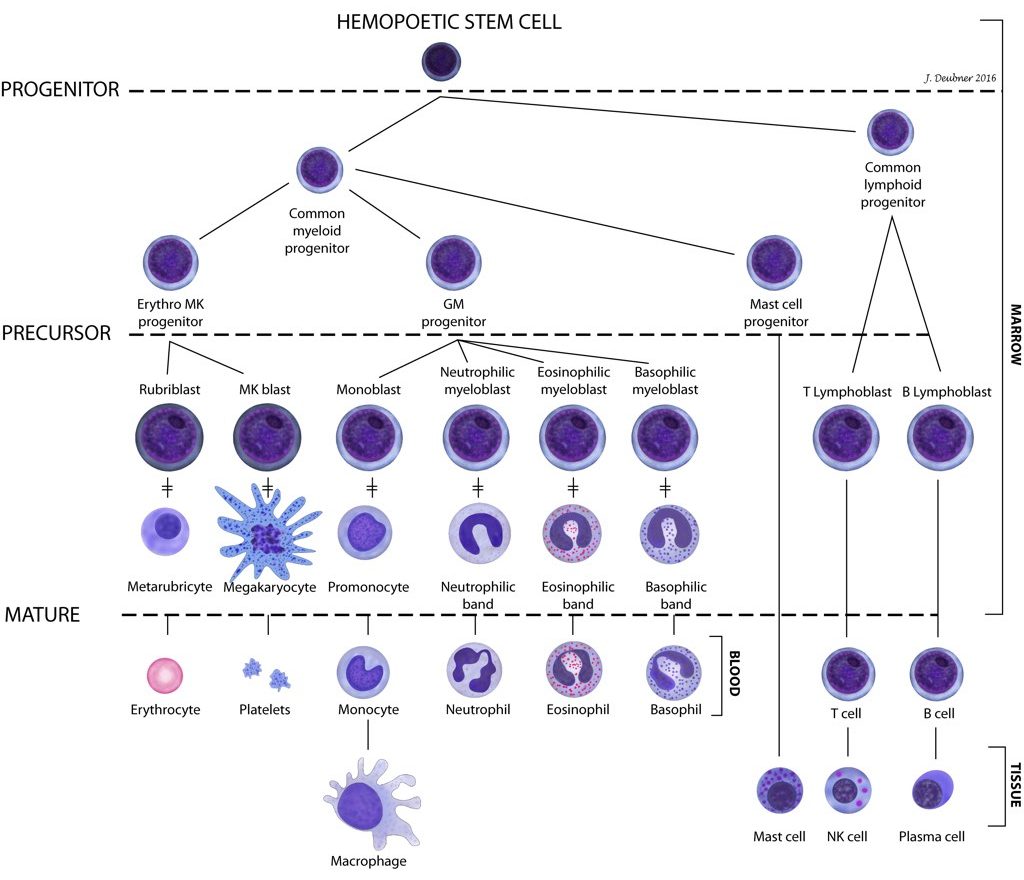Hemopoiesis
Hemopoiesis (also known as hematopoiesis) refers to the production of all blood cells: red blood cells (RBCs), white blood cells (WBCs), and platelets. Hemopoiesis is most effective in the bone marrow although other tissues, such as the spleen and liver, may provide additional sites of blood cell production.
Hemopoietic stem cells have the ability to develop into common myeloid progenitors and common lymphoid progenitors (Fig. 1.1). Erythrocytes, megakaryocytes, and all leukocytes (except lymphocytes, are generated from common myeloid progenitors. The first level of committed differentiation is within the precursor cell compartment. The bone marrow microenvironment provides the structural and biochemical support for normal hemopoiesis. Growth factors, transcription factors, adhesion molecules, interleukins, and other mediators comprise a complex system which responds to increased demands when required and maintains a finely-tuned balance under normal circumstances. The expression and availability of these factors influence the balance among the various committed lineages.

An anucleate (in mammalian species) cytoplasmic fragment arising from a megakaryocyte; vital for primary hemostasis.
Organ responsible for production of hemopoietic cells; found in the medullary cavity, especially the ends of long bones (e.g. femur) and flat bones (e.g. the pelvis, sternum.)
Pluripotential cell that gives rise to all hemopoietic cell lines; also capable of self-renewal.
Referring to lymphocytes and tissues where lymphocytes develop.
Red blood cell (RBC); an anucleate (in mammalian species) cell containing hemoglobin needed for oxygen transport. Typically shaped like a bi-concave disk.
Polyploid cell found in the bone marrow (also spleen and lung) that produces platelets.
White blood cell (WBC); includes neutrophils, eosinophils, basophils, monocytes, lymphocytes, mast cells.
Mononuclear, non-phagocytic leukocyte responsible for humoral (B lymphocyte) and cell-mediated (T lymphocyte) immune responses.
First level of committed differentiation within a given cell line (e.g. in the bone marrow).

